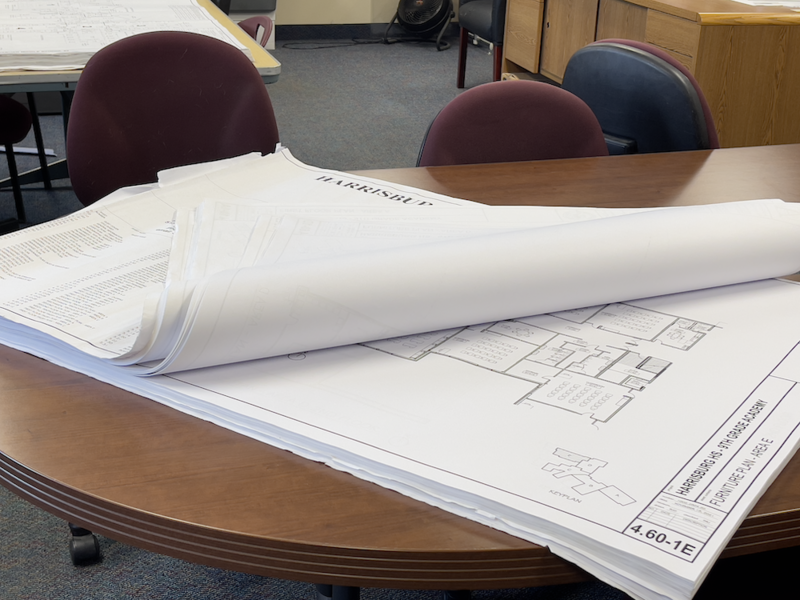Three new schools without higher taxes.
How does the Harrisburg School District do it?
Superintendent Tim Graf explains how
Numbers say it all. A 629% growth rate over the past 23 years. A growth rate of 231 new students per year since 2000. 1.3 new buildings every two years over the past 23 years. And the latest statistic from the U.S. Census Bureau, a 10.5% population increase for the city of Harrisburg between July 2021 and July 2022 translating to 9515 residents.

It explains why there are lots of new schools in Harrisburg. The new Freshman Academy and East Middle School will open this fall, and a new elementary school is under construction.
With student enrollment growing exponentially in the Harrisburg School District (HSD), new schools must be planned and paid for. So, how does the school district do it?
“The growing tax base in the community and the fiscally responsible District spending has allowed HSD to stay ahead of growth and maintain a level tax levy,” said Superintendent Tim Graf. “Current and past school boards have made a commitment to a level tax levy, which has remained constant throughout the past two decades. Home valuations around the country have greatly increased in recent years, which may mean your property taxes have also increased. This is because taxes are based on the assessed value of the property, so if the value goes up, so does the amount of taxes. A property’s appreciation in value can result in a higher sale price when it is time to sell.”
Graf, like HSD’s past superintendent, brought a building industry background to the table when he came to Harrisburg and understands the nature of the construction process when it comes to a school district.
According to Graf, the District’s building efficiency measures have resulted in millions of dollars of taxpayer savings.
“As we have had to continue to plan for schools, the school district has found its own ways to keep building costs down and not raise taxes,” he explained.
Graf details how HSD does it:
Efficiency in building costs
HSD construction costs have been lower than those of other districts around the state. The past three projects the District has constructed since 2019 have been built at an average of $166 per square foot. In comparison, 15 other school district projects in eastern South Dakota have been built at an average of $287 per square foot. Western South Dakota project costs are often significantly higher.
Plan reuse
The District has benefited from significant savings in architecture and engineering costs by using plans that have proven to work with little or no significant changes. East Middle School which will open in the Fall of 2023 has been built using the same design plan as that of North Middle School. Several of our newer elementary school designs were also built with little or no change.
Bond/District investments
Throughout the construction period, proceeds from the District Bonds are invested. Through the help of our bond advisor, we have been able to maximize the returns by receiving competitive returns. We also have access to the most competitive interest rates on what is anticipated in the bond market. Before interest rates rose, the District locked in at 3.8%. Interest income is more than $1,300,000.
Project bids at the right time
The pandemic severely impacted the construction industry, including shortages of skilled labor across the industry. In addition, supply chain disruptions affected availability, cost, and delivery of materials and equipment. Fortunately at bidding time for our recent projects, costs began to stabilize, favorably in lower than anticipated bids and a greater saving to the District.
Choosing the best method of project delivery
There are three common building models school districts use when overseeing a building project. Each may work for certain projects or districts depending on several factors including their location, time and the market. The Design-Bid-Build Construction Model is one method. In this method, the project owner hires a design professional (architect or engineer) to create the detailed plans and specifications of the project. Then, the owner invites bids from multiple contractors to build the project based on those plans. The contractor with the lowest bid is usually awarded the project contract.
The Construction Management Model involves a construction manager overseeing the project and receiving a percentage of the overall project cost. A third model is the
Construction-Management-at Risk Model. In this model, the construction company guarantees a price and assumes the associated risks if subcontractors cannot be found.
HSD feels the Design-Bid-Build Model makes the most sense. We benefit from our location to the Sioux Falls area because of the variety of available local subcontractors, creating a competitive bidding environment.
Having its own construction consultant
Many project owners have an outside project manager to oversee the construction process, but the HSD has hired its own construction consultant who has a vested interest in the District. The cost saving hiring a construction consultant to closely oversee design decisions and daily operations on a work site far outweigh the cost of the position itself.
Practice makes perfect
After building .65 buildings every year for 23 years, HSD has honed its process in several ways to build efficiently and effectively. The planning and implementation process is one that has worked well for the District and has continued to be utilized with slight adaptations and modifications for each unique project. The District has also developed a strong working relationship with the team at Architecture Incorporated. Their knowledge of the District allows them to know the District needs and design to accommodate our requests. Our planning and implementation process is one that has worked well for the District and has continued to be utilized with slight adaptations and modifications for each unique project.
Published with permission by the Sioux Valley News

